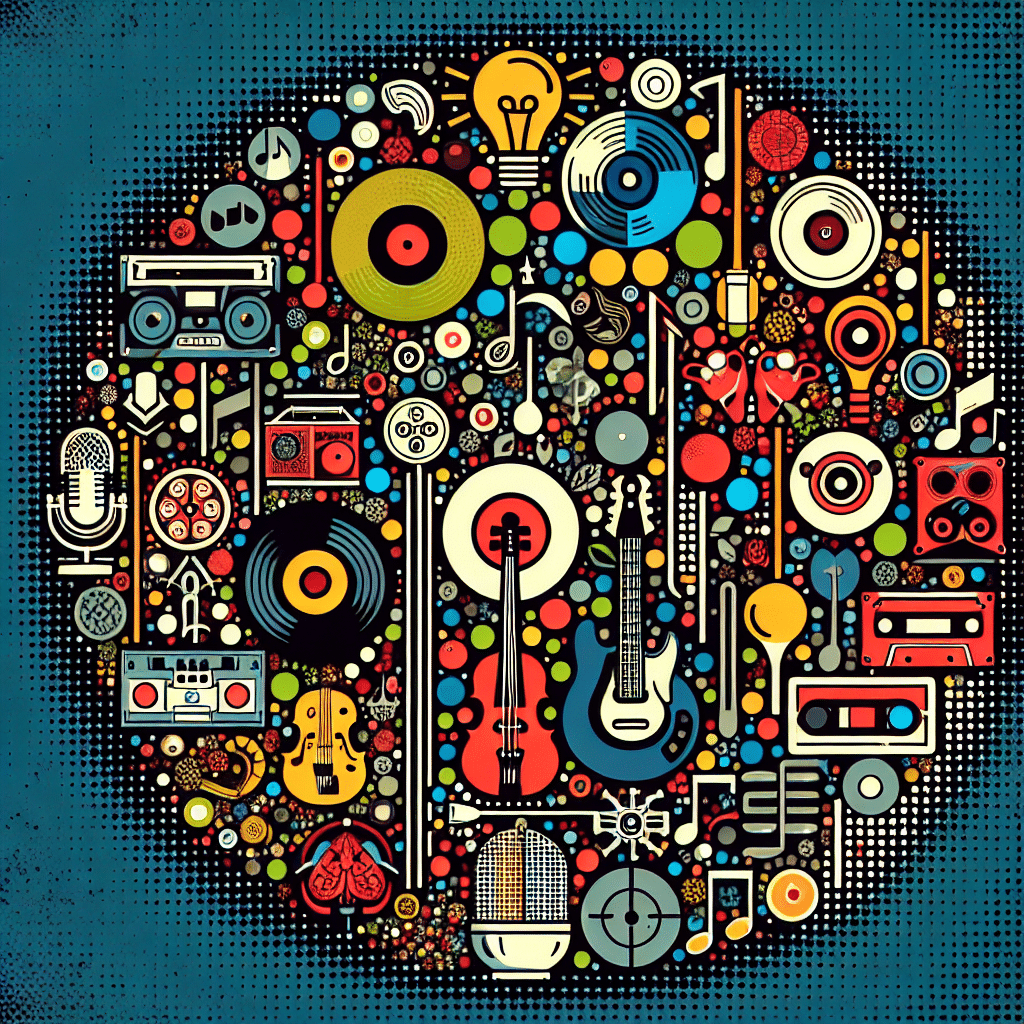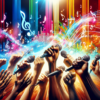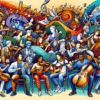Genre-Blending: How Modern Pop is Breaking All the Rules

Introduction
In an era defined by rapid technological advancement and interconnectedness, the music landscape has undergone a profound transformation. Traditional genre boundaries, which once served as a structural framework for artists, are now frequently blurred and redefined. Modern pop music exemplifies this evolution, blending influences from various genres to create innovative sounds that resonate with diverse audiences. From hip hop and rock to electronic and folk, today's artists are challenging the conventional categorization of music, leading to a paradigm shift in how we understand and appreciate pop.
Historical Context
To understand the phenomenon of genre-blending in modern pop, it is essential to explore its historical context. The roots of genre fluidity can be traced back to the late 20th century, particularly in the 1980s and 1990s, when artists began experimenting with eclectic sounds. The rise of new technologies, such as synthesizers and drum machines, facilitated the fusion of genres, as seen in the emergence of genres like new wave, rap, and regional subgenres.
One landmark moment was the release of the Beastie Boys’ “Licensed to Ill” in 1986, which blended punk, rock, and hip-hop. The 1990s saw further genre-defying acts, such as Nirvana's grunge sound, which integrated punk and rock elements, and OutKast’s unique fusion of hip-hop, funk, and rock.
See Also: Empowering Pop: Analyzing the Themes Behind This Year's Chart Hits
Empowering Pop: Analyzing the Themes Behind This Year's Chart HitsAs we moved into the 21st century, a new era of digital consumption emerged. The advent of music streaming platforms like Spotify and Apple Music drastically changed how listeners engage with music, allowing for greater exposure to a wide range of genres. This accessibility fostered a culture of exploration and creativity, encouraging artists to step outside the confines of their traditional genres.
Key Artists
Several contemporary artists epitomize the genre-blending trend in modern pop music. One notable figure is Billie Eilish, who has redefined pop with her signature sound, melding elements of electropop, R&B, and indie. Her debut album, "When We All Fall Asleep, Where Do We Go?" broke conventional molds, featuring whispered vocals, haunting beats, and unconventional song structures. Eilish's popularity highlights how genre-defying music can attract a massive audience while challenging norms.
Another critical artist in this genre-blending landscape is Lil Nas X, whose viral hit "Old Town Road" melded country music with hip-hop, sparking widespread conversation about genre classification. The track's unprecedented success on the Billboard charts led to debates about what constitutes 'country' and whether genres should be more inclusive. The song's fusion of styles challenged long-standing industry norms, leading to a reevaluation of how we perceive pop.
Dua Lipa represents another facet of modern pop's genre-blending ethos. Her innovative album "Future Nostalgia" encompasses disco, funk, and new wave influences, bridging the gap between nostalgia for past sounds and contemporary pop. Lipa's ability to incorporate diverse influences while maintaining a catchy pop sensibility illustrates the dynamic nature of modern music.
See Also: Beyond the Dance Floor: The Shift Towards Intimate, Reflective Pop Ballads
Beyond the Dance Floor: The Shift Towards Intimate, Reflective Pop BalladsCurrent Trends
Current trends in modern pop indicate a continued embrace of genre-blending. Collaborations across diverse musical styles have become increasingly common, with artists from varying backgrounds joining forces to create unique sounds. For instance, the collaboration between pop singer Shawn Mendes and Latin artist Camila Cabello on "Señorita" merged pop with Latin influences, showcasing the growing demand for cross-genre experimentation.
Additionally, the rise of hyperpop—a genre known for its eclectic mix of pop, electronic, and experimental sounds—exemplifies this trend. Artists like 100 gecs and SOPHIE have attracted attention for their radical departures from traditional pop structures. Hyperpop's DIY aesthetic and embrace of avant-garde production techniques challenge the conventions of what pop music can be.
The ongoing influence of social media platforms like TikTok cannot be overstated. Viral challenges and trends often lead to music from various genres blending into mainstream pop culture. Tracks that might have previously remained niche are now catapulted into the spotlight, further blurring the lines between genres. This cultural phenomenon demonstrates how pop music increasingly reflects a collective, collaborative approach to creativity.
Cultural Impact
The genre-blending trend in modern pop extends beyond just music; it has significant cultural implications as well. By breaking down genre barriers, artists foster a greater sense of inclusivity and diversity within the music industry. This shift encourages fans to embrace a broader range of musical influences, promoting greater understanding and appreciation of different cultures.
See Also: Melody Makers: The Songwriters Behind the Biggest Pop Hits
Melody Makers: The Songwriters Behind the Biggest Pop HitsMoreover, genre-blending in pop music frequently acts as a catalyst for social change. For example, merging elements of hip-hop with pop often brings attention to themes of identity, race, and societal issues, as seen in songs like “This Is America” by Childish Gambino. The blending of genres acts as a metaphor for a more interconnected world, emphasizing unity and cooperation amidst diversity.
Furthermore, the challenges posed to traditional music business structures cannot be overlooked. The rise of genre-blending artists signifies a shift in how the industry operates, with artists wielding more power over their creativity and audience engagement than ever. This evolution is fostering innovative approaches to music production, marketing, and distribution.
Conclusion: The Significance of Genre-Blending
As modern pop continues to break all the rules of conventional genre classification, it exemplifies an era of unprecedented creativity and collaboration. By embracing eclectic influences, artists are challenging listeners’ perceptions of music, leading to a richer, more diverse listening experience. Genre-blending has not only redefined pop music but has also mirrored and catalyzed cultural shifts in society. As we move forward, it is clear that the boundaries of music will continue to dissolve, shaping the future of pop in a way that is dynamic, inclusive, and vibrant.
FAQs
See Also: Diversity and Representation: The Changing Face of Modern Pop Music
Diversity and Representation: The Changing Face of Modern Pop MusicWhat is genre-blending in music?
Genre-blending refers to the mixing of two or more distinct musical genres to create a new sound or style. This practice allows artists to experiment creatively and can lead to innovative musical experiences.
How has technology influenced genre-blending?
Advancements in technology, particularly in music production and distribution, have greatly facilitated genre-blending. Digital tools allow artists to easily merge styles and reach broader audiences through platforms like Spotify and TikTok.
Why is genre-blending important in modern pop?
Genre-blending reflects cultural diversity and inclusivity within the music industry, connecting different audiences and promoting cross-cultural exchange. It also represents a shift in creativity, giving artists the freedom to explore beyond traditional musical structures.
Who are some notable genre-blending artists today?
Prominent genre-blending artists include Billie Eilish, Lil Nas X, Dua Lipa, and 100 gecs, among others. Each of these artists incorporates diverse influences into their music, pushing the boundaries of pop.
Will genre-blending continue to rise in the future?
Given current trends and the increasing acceptance of cross-genre experimentation, it is likely that genre-blending will continue to thrive in the future, shaping the evolution of pop music and the broader musical landscape.
 Streaming Wars: How Spotify and Apple Music are Influencing Pop Music Trends
Streaming Wars: How Spotify and Apple Music are Influencing Pop Music TrendsIf you want to know other articles similar to Genre-Blending: How Modern Pop is Breaking All the Rules you can visit the category Pop.
